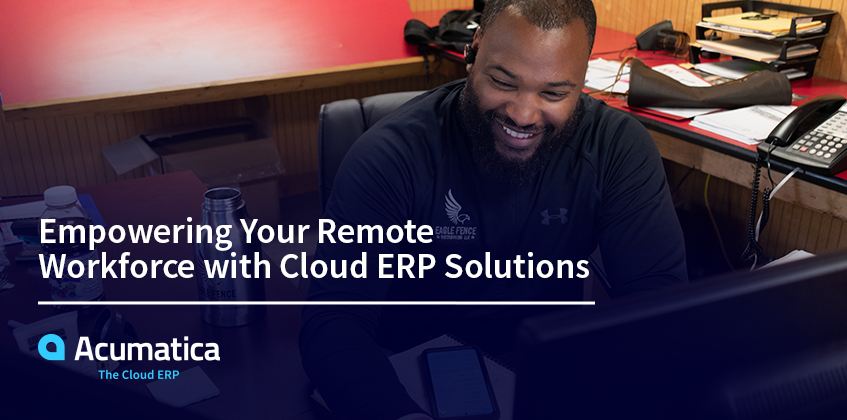Empowering and Supporting Your Remote Workforce
We’re two-and-a-half years into the pandemic, and many businesses have established remote workforce policies. In its 2021 State of Remote Work report, Owl Labs presents intriguing statistics about working from home (WFH).
- 90% of the remote workers surveyed felt they were just as productive—if not more so—WFH vs. working in the office.
- 48% said they would start looking for another job if they could no longer work remotely.
- 81% of the sampled US employees, who were WFH during the pandemic, want their hybrid or remote working styles to continue when the pandemic is over.
- 57% of the employees who returned to the office said they preferred WFH full time.
So, remote and/or hybrid work is here to stay. But, despite its benefits, it does present some challenges. Apart from causing a surge in cybersecurity concerns, WFH can also make employees feel isolated or upend their work-life balance. Unfortunately, many companies are relying on legacy ERP solutions or on-premises, disconnected business management systems to link and protect their employees—to no avail. These solutions were not designed for today’s digital economy, and they cannot fully support a remote workforce.
The good news is, there’s another option: cloud ERP solutions. Cloud ERP solutions provide access to crucial company data anytime, anywhere, via any web-enabled device, ensuring business continuity, constant information availability, and enhanced security.
Ensuring Business Continuity, Availability, and Security
During the COVID-19 shutdowns, business continuity was a big hurdle. Companies were scrambling to equip employees with the tools and technology needed to do their jobs from home. Second-nature, office-based activities—like accessing business data, having meetings, and sharing reports—swiftly became major stumbling blocks. So, too, was securing IT infrastructure across multiple locations.
With on-premises business management solutions, internal teams are entirely responsible for security. They have to purchase the software outright, manage access policies, guard against cyberattacks, install firewalls, and more—all at a high cost to the business. In contrast, for cloud ERP solutions, the software vendor is responsible for taking all security measures and for complying with legal and regulatory requirements. This lessens costs for the client business and lifts weight off its internal teams, giving them time to focus on innovation and growth.
The best cloud ERP solutions give organizations and their remote workforces the features needed for business activities to continue despite unexpected crises—keeping employees up to date and readily available. They also work to protect businesses, employees, and customers from insider threats, malware, human error, and much more.
Quickly Scale Your Teams
One of the major benefits of having a remote workforce is being able to quickly scale your teams by hiring talent from around the world. You’re not limiting yourself to the pool of prospective employees who live in commuting distance to your premises.
According to a January 2022 article by Robert Half, the world’s largest specialized staffing firm, “Opening the door to recruiting skilled talent without concern for geographic boundaries raises a company’s chances of connecting with job applicants who possess the skills and experience the business needs.” The article goes on to say that providing remote work opportunities is essential to retaining valued employees: “Many workers have found that the ability to work remotely allows them to find a better work-life balance, which, in turn, has a positive impact on their overall well-being.” And employee well-being leads to job satisfaction and, ultimately, lower turnover rates.
It can, however, be difficult to predict and anticipate workloads for remote teams versus in-person teams—which can impair your ability to determine which teams should grow or change. Thankfully, cloud ERP solutions provide a 360-degree view of your teams’ workloads and resources in a single, centralized space. These insights let you immediately see the “big picture” of all your teams, regardless of geography, helping you quickly determine where new talent may be necessary.
Bridging Communication Gaps across Teams
Communication in the workplace is critical to business success. In a recent article for Leadership Choice (a communication workshop, leadership training, and business coaching company), Patrick Bosworth writes: “In the workplace, good communication isn’t just about mitigating conflict….Good communication is also an important factor in client relationships, profitability, team effectiveness, and employee engagement.”
Unfortunately, when employees can’t have face-to-face meetings, communication can be compromised. Video conferencing and chat apps help, but communication requires more than just talking. Team members must also have remote collaboration capabilities, with access to updated and accurate reports, documents, and project management resources. This guarantees that they are working toward the same goals with the same information—and cloud ERP solutions make that possible.
In a cloud ERP solution, data from every department in an organization flows into and out of a centralized database. Employees can access synchronized, real-time data, streamline their workflows, and use automated business processes from anywhere—at home, on the road, or at a worksite.
Accommodating Varied Needs with a Hybrid Approach
As beneficial as cloud-based ERP systems can be, many organizations are still using outdated, on-premises solutions. These companies may be reluctant to abandon their current solutions, but many are quickly discovering that moving to the cloud—thus eliminating the need to maintain, update, and secure their own hardware—may be necessary to compete with more flexible, digitally resilient businesses.
For companies like these, implementing a hybrid approach (that is, using the best of both cloud and on-premises solutions) may be the way to go. Techopedia explains further:
[I]n some cases, there may be situations where clients subscribing to cloud services may keep some hardware or data on-site. The part of the infrastructure that is housed at the client’s business would be called on-premises cloud infrastructure. For example, certain types of more frequently accessed data could reside inside the client’s network, although major services and data sets are provisioned in the cloud.
It would be up to you and the ERP vendor you choose to decide how to configure the hybrid environment, with an eye towards creating a happy, healthy, and productive team of remote employees. This may mean choosing a hybrid workforce.
A hybrid workforce splits its time between WFH and working in the office. A February 2022 Gallup survey reveals that, of those polled, 42% of remote-capable employees had a hybrid schedule, and 39% continued to work solely from home. The survey goes on to say: “When asked where they plan to work long term—according to the plans their employer communicated—remote-capable employees confirmed that a hybrid work schedule will be the predominant office arrangement going forward. About 53% expect a hybrid arrangement, and 24% expect to work exclusively remotely.”
Interestingly, though, a December 2021 Robert Half infographic shows that 41% of surveyed employees planned to look for new jobs in the first half of 2022—a major reason being that they wanted to permanently work remotely, rather than in the office or on a hybrid schedule.
For every business, choosing between a hybrid and a fully remote workforce is a very personalized decision. Fortunately, Acumatica’s cloud ERP solution is built to empower and support both.
How Acumatica Can Help
Though many COVID-19 restrictions have eased, businesses are still adapting to the evolving standards and expectations born from the pandemic. But, according to an SMB Group eBook, SMBs are feeling optimistic about the future. Part of that optimism stems from the fact that almost half of the SMBs surveyed have accelerated tech adoption (such as implementing cloud ERP solutions, like Acumatica). Those that have were “1.6 times more likely to anticipate increased revenues in their next fiscal year than those that decelerated or made no change.”
Acumatica, an award-winning ERP system built for the cloud, is a comprehensive business management solution, offering organizations a full suite of integrated applications that rest on an open, future-proof platform. It’s a powerful tool you can use to ensure business continuity, grow your teams (remote, hybrid, and onsite), and increase company-wide communication and collaboration. You can choose to deploy the software on your premises, in the cloud, or as a hybrid of both—finding the pattern that best suits you. Acumatica also has an established information security program designed to comply with legal and regulatory requirements, including the EU’s General Data Protection Regulation (GDPR), SSAE, ISO IEC 27001:2013, and more.
To learn more about how Acumatica can help you manage your remote workforce successfully, contact our team today.













